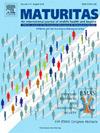不良的童年经历和中老年人的昼夜节律综合征:一项全国样本的多方法分析
IF 3.6
2区 医学
Q2 GERIATRICS & GERONTOLOGY
引用次数: 0
摘要
背景:越来越多的证据强调了不良童年经历(ace)与一生中健康状况不佳之间的联系。方法采用潜行分类分析方法对ace进行分类。采用广义线性回归和二元逻辑回归来评估ace与昼夜节律综合征(CircS)之间的关系。此外,还进行了网络分析,以确定中心节点。结果该研究共有7896名参与者。潜类分析将ace分为三类,即1类“家庭精神疾病”、2类“身体虐待和欺凌”和3类“低ace”。观察到较高的累积ACE暴露与CircS有显著相关性,包括总ACE (OR = 1.08)、3 ACE (OR = 1.28)、≥4 ACE (OR = 1.60)、总威胁相关ACE (OR = 1.10)和≥2威胁相关ACE (OR = 1.32)。以“身体虐待和欺凌”为标志的第2类群集与CircS增加相关(OR = 1.22)。同样,个体的ace——家庭暴力、家庭精神疾病和父母分居/离婚——与CircS的高风险相关(OR = 1.26-2.69)。这些暴露也与大量CircS成分相关(β = 0.05-0.28)。网络分析进一步突出了家庭精神疾病、家庭暴力、欺凌和身体虐待是最中心的节点。本研究为了解ace的影响提供了一个全面的框架,并强调了筛查ace的重要性,以更好地解决ace与昼夜健康的关系。本文章由计算机程序翻译,如有差异,请以英文原文为准。
Adverse childhood experiences and circadian syndrome in middle-aged and older adults: A multi-method analysis of a national sample
Background
Emerging evidence underscores the link between adverse childhood experiences (ACEs) and poor health across the lifespan.
Methods
Latent class analysis was used to identify distinct classes of ACEs. Generalized linear regression and binary logistic regression were employed to assess the associations between ACEs and circadian syndrome (CircS). Additionally, network analysis was conducted to identify central nodes.
Results
The study had a total of 7896 participants. The latent class analysis identified three classes of ACEs, namely class 1 ‘household mental illness’, class 2 ‘physical abuse and bullying’, and class 3 ‘low ACEs’. Significant associations with CircS were observed for higher cumulative ACE exposure, including total ACEs (OR = 1.08), 3 ACEs (OR = 1.28), ≥4 ACEs (OR = 1.60), total threat-related ACEs (OR = 1.10), and ≥ 2 threat-related ACEs (OR = 1.32). The class 2 cluster, marked by ‘physical abuse and bullying’, was associated with increased CircS (OR = 1.22). Similarly, individual ACEs—household violence, household mental illness, and parental separation/divorce—were linked to higher risk of CircS (OR = 1.26–2.69). These exposures were also associated with a larger number of CircS components (β = 0.05–0.28). Network analysis further highlighted household mental illness, household violence, bullying, and physical abuse as the most central nodes.
Conclusions
This study provides a comprehensive framework for understanding the effects of ACEs and underscores the importance of screening for them to better address their associations with circadian health.
求助全文
通过发布文献求助,成功后即可免费获取论文全文。
去求助
来源期刊

Maturitas
医学-妇产科学
CiteScore
9.10
自引率
2.00%
发文量
142
审稿时长
40 days
期刊介绍:
Maturitas is an international multidisciplinary peer reviewed scientific journal of midlife health and beyond publishing original research, reviews, consensus statements and guidelines, and mini-reviews. The journal provides a forum for all aspects of postreproductive health in both genders ranging from basic science to health and social care.
Topic areas include:• Aging• Alternative and Complementary medicines• Arthritis and Bone Health• Cancer• Cardiovascular Health• Cognitive and Physical Functioning• Epidemiology, health and social care• Gynecology/ Reproductive Endocrinology• Nutrition/ Obesity Diabetes/ Metabolic Syndrome• Menopause, Ovarian Aging• Mental Health• Pharmacology• Sexuality• Quality of Life
 求助内容:
求助内容: 应助结果提醒方式:
应助结果提醒方式:


